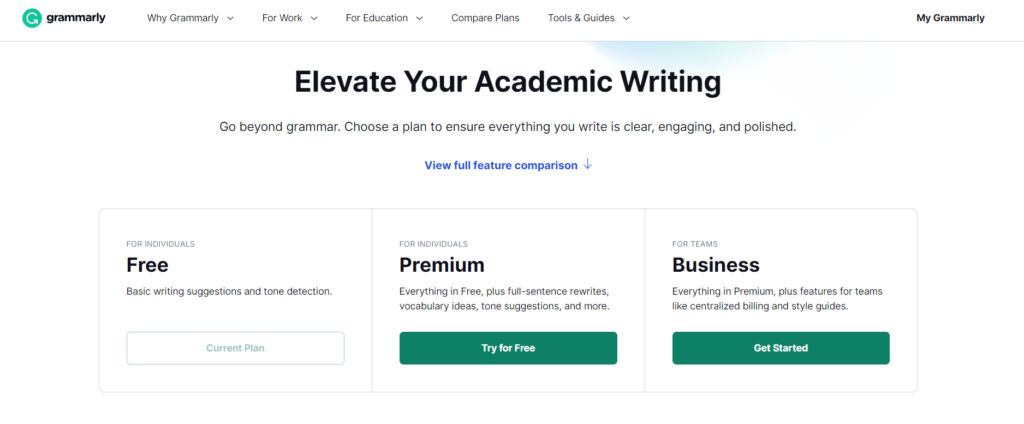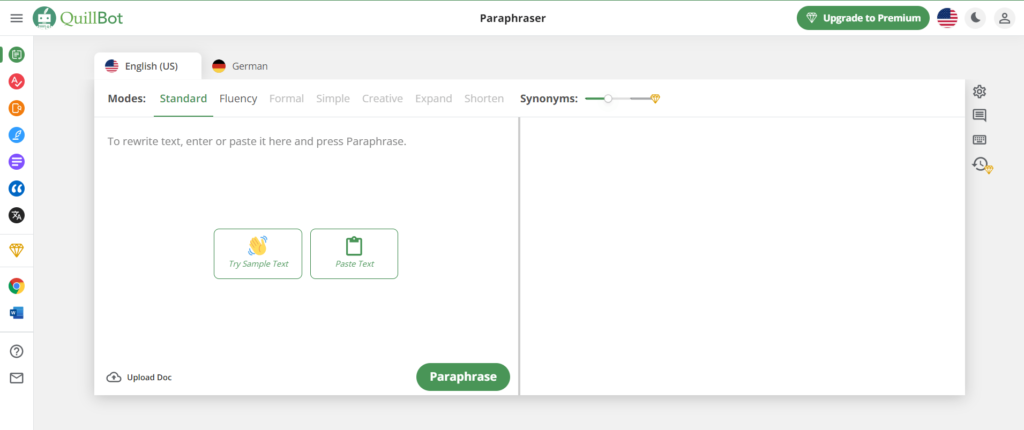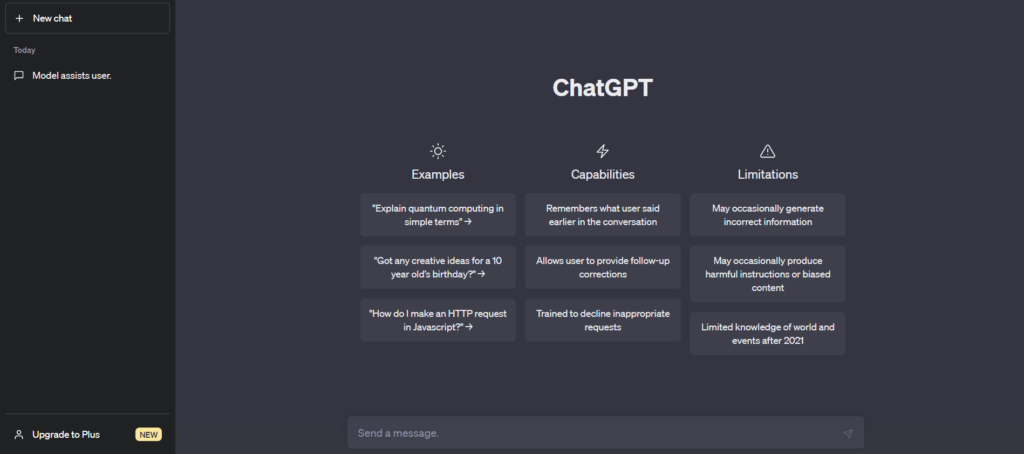
The effectiveness and resonance of our writing often diverge from our original intentions, but thanks to artificial intelligence (AI) tools, refining and enhancing text has never been more accessible. These tools act as invaluable allies, providing writers with the means to polish, streamline, and elevate their work.
The Role of AI in Writing
AI has become an indispensable partner for writers, offering a robust suite of tools to assist in editing, grammar checks, style improvements, and idea generation. Whether you’re crafting blog posts, professional emails, or creative stories, AI-powered platforms help optimize content for both quality and engagement.
Benefits of AI-Powered Editing Tools:
- Streamlined Writing Process: These platforms identify and correct grammatical errors and suggest improvements for better flow and clarity.
- Creative Support: AI tools inspire new ideas by providing suggestions for rephrasing or expanding content.
- Improved Accuracy: With real-time feedback, writers can address spelling and syntax issues on the go.
Transforming Content Creation
In this article, we will explore three cutting-edge AI editors that have recently emerged in the market. These tools promise to redefine how we approach content creation, offering innovative features designed to improve efficiency, enhance creativity, and ensure precision. Whether you’re a seasoned professional or a novice writer, these editors are set to become an essential part of your toolkit.
Did you know that there are 1000s of AI tools across more than 50 categories on Metaverseplanet? You can explore our Artificial Intelligence Tools category to discover the latest and most innovative AI solutions tailored for your needs.
Transform Your Sentences with AI Tools
- Grammarly
- QuillBot
- ChatGPT
1.Grammarly

Grammarly leads the charge in our review of AI writing assistants, backed by a notable $200 million investment in 2021, cementing its position as a market leader. Renowned for its ability to highlight grammatical mistakes, suggest stylistic improvements, and enrich users’ writing with synonym recommendations, Grammarly serves as an essential tool for enhancing writing skills. Its seamless integration with email clients, web browsers, and desktop applications ensures accessibility for millions of users.
Key Features of Grammarly:
- Grammar and Style Enhancement
Grammarly excels in detecting grammatical errors, averaging 400 corrections per user, with 76% of suggestions accepted. Its real-time feedback is invaluable for content creators, enabling smoother editing processes. - Spell-Checking and Punctuation
With the ability to identify over 250 types of typing errors, Grammarly helps refine spelling and punctuation, reportedly correcting 150 mistakes per person on average. - Plagiarism Detection
Grammarly’s plagiarism checker is highly accurate, boasting a 99% detection rate. It scans billions of web pages to ensure originality, making it a trusted tool for avoiding duplications. - Customizability and Compatibility
Grammarly’s browser extension offers immediate feedback and is highly customizable, allowing users to tailor suggestions to their specific writing style and preferences.
Reach and Popularity:
Grammarly boasts over 20 million daily active users worldwide and a total of 30 million sign-ups. Available as a browser extension, desktop app, and mobile application, Grammarly caters to a global audience with ease.
Limitations to Consider:
- Style and Tone Accuracy: While Grammarly provides stylistic advice, some users find its style suggestions less reliable, particularly for nuanced writing.
- Performance Issues: Reports of technical slowdowns caused by the browser extension have been noted.
Verdict:
Despite minor shortcomings, Grammarly is a powerful assistant for refining writing, improving grammar, and avoiding plagiarism. Its blend of features, ease of use, and broad user satisfaction solidify its standing as a leading tool in the writing assistant space. For both casual writers and professionals, Grammarly remains an indispensable resource for producing polished, error-free content.
2.QuillBot

QuillBot is a robust AI-powered writing assistant designed to help users enhance their text by rephrasing sentences and paragraphs while maintaining the original meaning. Whether you’re a writer aiming to avoid plagiarism, a student working on academic papers, or a professional looking to refine communication, QuillBot offers a range of solutions to improve writing efficiency.
Key Features of QuillBot:
- Paraphrasing Tool
QuillBot excels in rephrasing sentences and paragraphs, presenting users with multiple alternative versions of their text. Its standout feature lies in its ability to retain the original meaning, making it ideal for creating plagiarism-free content or expressing ideas more clearly. - Summarization and Translation (Premium Feature)
The premium version includes additional capabilities, such as summarizing documents to extract key points and translating text into other languages, broadening its usability across diverse fields. - Customizable Writing Tones
QuillBot offers users the ability to adjust the tone and style of their writing. This feature ensures that the text aligns with specific audiences or purposes, such as academic writing, casual communication, or professional correspondence. - Integration Options
QuillBot integrates with tools like Google Docs, Microsoft Word, and Chrome, enabling users to enhance their writing seamlessly within familiar platforms.
User Feedback and Statistics:
- Popularity: QuillBot serves over 5 million active users per month, with the paraphrasing tool processing over 100 million sentences daily.
- Positive Reviews: Users praise QuillBot’s accuracy, ability to quickly generate alternative phrases, and its knack for suggesting ideas they hadn’t considered.
- Critiques: Some users report occasional awkward or confusing sentences, where the paraphrased text may deviate slightly from the intended meaning.
Privacy Concerns:
While QuillBot is widely regarded for its functionality, some users have raised privacy concerns, as the tool requires access to the text being processed. Users handling sensitive information should review QuillBot’s data security measures before use.
Applications of QuillBot:
- Content Creation: Generate unique and polished content for blogs, articles, and marketing materials.
- Academic Writing: Simplify complex text or paraphrase ideas for essays and research papers.
- Professional Communication: Refine email drafts, reports, and presentations for clarity and impact.
Pricing:
QuillBot offers both a free version with limited features and a premium version that includes advanced functionalities like summarization, translation, and history saving.
Verdict:
QuillBot is an invaluable tool for users looking to improve writing efficiency, enhance clarity, and diversify expressions. While it may occasionally produce sentences that require minor adjustments, its ability to generate accurate paraphrases in seconds makes it a standout option in the AI writing assistant landscape. Whether you’re a student, professional, or content creator, QuillBot’s features cater to diverse writing needs, solidifying its place as a popular and versatile tool.
3.ChatGPT

Although GPT-4 has captivated users with its advanced capabilities, GPT-3 remains a noteworthy and accessible option for those looking to explore the potential of AI-powered writing tools. Developed by OpenAI, GPT-3 is an AI language model designed to generate human-like text based on user prompts. Its versatility ranges from crafting essays, stories, and even poetry to providing inspiration for writers facing writer’s block.
What is GPT-3?
Launched in June 2020, GPT-3, or Generative Pre-trained Transformer 3, is an advanced natural language processing (NLP) model. It has become a cornerstone tool in content creation, chatbots, language translation, and other applications requiring coherent and contextually accurate text generation. Its hallmark is the ability to produce high-quality, consistent, and persuasive content, which has impressed both professionals and casual users.
Key Benefits of GPT-3
- Time-Saving and Resource Efficiency
GPT-3 significantly reduces the time and effort required to generate content, making it an invaluable asset for writers, businesses, and marketers. - Multilingual Capabilities
GPT-3 supports content generation in multiple languages, making it an ideal tool for global businesses aiming to connect with diverse audiences. - Ease of Use
With its intuitive prompt-based system, GPT-3 offers a user-friendly interface, requiring no technical expertise to operate. - Positive Feedback from Users
According to a survey by OpenAI:- 60% of participants expressed satisfaction with GPT-3’s performance.
- 80% of respondents found it easy to use.
- 68% of users believe it has the potential to revolutionize the writing industry.
Limitations of GPT-3
Despite its strengths, GPT-3 has its imperfections:
- Contextual Understanding: It can occasionally misunderstand the nuances of certain words or phrases, leading to inaccuracies.
- Bias: Like any machine learning model, GPT-3 can inadvertently produce biased content, depending on the data it was trained on.
- Ethical Concerns: There is potential for misuse, such as generating misleading information or manipulating public opinion.
OpenAI’s Efforts to Address Limitations
To enhance GPT-3’s performance, OpenAI has introduced features like:
- Prompt Engineering: This technique helps guide GPT-3 to generate more targeted and specific outputs.
- GPT-3 Instruction Feature: Users can now provide feedback and teach GPT-3 new capabilities for improved accuracy and relevance.
- Zero-Shot Learning: This enables GPT-3 to comprehend and correctly interpret unfamiliar words or phrases, enhancing its contextual understanding.
AI Editors and Content Creation: Opportunities and Challenges
The rise of AI-powered tools like GPT-3 underscores the growing role of artificial intelligence in content production. These tools provide significant advantages:
- Enhanced Productivity: AI editors like Grammarly, QuillBot, and GPT-3 can streamline workflows and reduce the burden of repetitive tasks.
- Support for Writers: They assist in overcoming writer’s block, improving grammar, and generating fresh ideas.
However, reliance on AI tools comes with challenges:
- Erosion of Creative Control: AI editors may impose rigid rules and guidelines, potentially diluting a writer’s unique voice or style.
- Oversight Required: AI-generated content may include errors or irrelevant suggestions, necessitating human oversight to ensure quality.
Balancing AI and Human Creativity
While AI editors like GPT-3 offer impressive capabilities, they work best as complements to a writer’s insight and creativity. By combining the strengths of AI with human judgment, writers can produce content that is both efficient and original.
The Future of AI in Writing
AI tools like GPT-3 are shaping the future of content creation, offering a broad spectrum of applications across industries. Yet, as AI continues to evolve, the importance of human creativity, ethical considerations, and critical thinking will remain paramount. By embracing AI as a partner rather than a replacement, writers and businesses can achieve new levels of productivity and innovation.
You may also like this content
- Blockchain and Artificial Intelligence
- China Wind in Artificial Intelligence: What is DeepSeek?
- Top 1000 Sci-Fi Movies About Metaverse, AI, and Science
Follow us on TWITTER (X) and be instantly informed about the latest developments…












